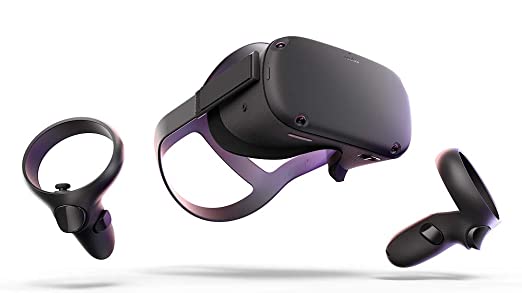The Oculus Quest was released in the Spring of 2019 as a standalone, wireless VR headset that didn’t require a computer or smartphone to operate. It was groundbreaking technology; it was also the best-selling VR headset of that year. The Oculus Quest is equipped with incredibly advanced features like six degrees of freedom (6DoF) tracking and inside-out tracking that allows users to move around freely without being tethered by wires. These are all the details you need about whether the Oculus Quest is still good in 2022. Let’s get started!
What is the Oculus Quest?

The Oculus Quest is a standalone, wireless VR headset that doesn’t require a computer or smartphone to operate. The Quest was released in the Spring of 2019 as the next iteration of the Oculus Rift headset. It has a similar design to the Rift, but is lighter and has built-in sensors for inside-out tracking. The Quest has incredible features like 6DoF tracking and inside-out tracking that allow users to move around freely without being tethered by wires. The Quest works with a built-in handheld controller that features buttons and touchpads for interacting with games and apps.
Oculus Quest Specs
- The Oculus Quest is equipped with a Snapdragon 835 processor
- OLED display that has a WQHD resolution of 1440 x 1600 pixels per eye, which is higher than the resolution of the Rift.
- built-in 32-bit sound system, which delivers crisp and clear audio in both open- and closed-eared headsets.
- 72 Hz refresh rate
Good for Gaming?
The Oculus Quest is perfect for gamers who are new to VR. The Quest has a user-friendly interface, and its intuitive controllers make it easy to navigate. The Quest also has a large library of games that range from action to puzzles and a few sports games. The Quest’s 6DoF tracking system and inside-out tracking system make it even more immersive and convenient. The tracking system allows you to move around freely without being tethered to a computer or wall. The inside-out tracking system keeps track of your movements without the use of external sensors. There’s also a feature called Guardian, which prevents you from bumping into things while you’re playing.
You can also use other libraries of games as well as mods for even more access and usability for gaming. Although they can be used in creative ways, most VRs are for gaming and usually come with some great features that cater to that audience.
Tracking and Controllers
The Oculus Quest has an inside-out tracking system that allows users to move around freely without being tethered by wires. The Quest’s sensors detect the user and adjust the visuals accordingly. You can move the controllers around, and the sensors will keep track of them no matter where you put them. This is a big difference from the Rift, which only has external sensors. The Quest’s controllers are ergonomically designed with a built-in thumb grid and trigger buttons. The controllers have a similar design to the ones featured in the Rift. The Quest’s controllers are also capable of 6DoF tracking, so you can interact with virtual objects with gestures just like you would in real life.
Comfort and Design
The Oculus Quest has a weight of approximately one pound, making it lighter than the Oculus Rift. This makes it more comfortable to use for long periods of time. The Quest’s design is sleeker than the Rift’s and is covered with a fabric material that prevents it from being smudged or scratched. The built-in sensors are located on the front of the headset and are almost unnoticeable. The only thing that stands out on the front is the Quest’s built-in sounds, which come out of a “mouth” on the front of the headset.
The Quest is generally among the more comfortable options considering the lighter weight and less intense premise.
Resolution and Refresh Rate
The Oculus Quest has a WQHD resolution of 1440 x 1600 pixels per eye. The Rift has a slightly higher resolution of 1440 x 1200 per eye. The difference between the two resolutions might not be noticeable to most people. The Quest’s OLED display has a faster refresh rate of 72 Hz, which is two Hz faster than the Rift. The difference between the two doesn’t make a huge difference in visuals, but it’s something to keep in mind. The Oculus Quest’s faster refresh rate is especially useful for gaming because it reduces image persistence. This results in less blurring and ghosting.
Steam Compatible?
The Quest is currently compatible with most VR games, including Steam games. This means that the Quest can run a large selection of Steam games. The Quest’s website has a list of all games that are compatible with the headset, which a quick search on Steam can also provide. The Quest’s compatibility with Steam games is a nice feature, but it’s nothing groundbreaking. Many other headsets are also compatible with Steam.
Is The Quest Still Supported?
The Oculus Quest was a ground-breaking VR headset when it was released. However, technology has progressed, and the Quest will soon be outdated. Facebook (Meta) plans to drop support for the Quest in January 2023.
The Quest is only equipped with a Snapdragon 835 processor, which is now outdated in some ways. Newer processors are more powerful and efficient, so they will be able to handle more advanced games and experiences. The Quest is also lacking some features that many other VR headsets have, such as eye-tracking and hand tracking. The Quest’s sensors aren’t precise enough to identify the user’s eyes and hands, so these features aren’t available with the headset.
Pros
- The Oculus Quest is a standalone VR headset that doesn’t require a computer or smartphone to operate.
- Inside-out tracking system that allows users to move around freely without being tethered by wires.
- The Quest has a sleek and modern design that is more comfortable to wear compared to the Oculus Rift.
- WQHD resolution of 1440 x 1600 pixels per eye, which is higher than the Rift’s resolution.
- Built-in 32-bit sound system, which delivers crisp and clear audio.
- Can be bought cheaper now that the Quest 2 is out.
Cons
- The Oculus Quest is only equipped with a Snapdragon 835 processor.
- Lacking some features that other VR headsets have, such as eye-tracking and hand tracking.
- Losing support in the near future.
Conclusion: Is the Oculus Quest Worth it?
The Oculus Quest is still worth it if you can get it cheap on a used market. It is still incredibly powerful, and it has all the features that a top-notch VR headset should have. The only downside is that this headset is currently behind in terms of technology when considering that the Quest 2 is out, as well as other headsets in the market. The Quest will likely be outdated within the next few years, but still, it’s an impressive VR headset that is worth checking out.
Oculus Quest Review
-
Design and Comfort
-
Resolution and Refresh Rate
-
Features
-
Tracking
-
Ease of Use
Summary
The Oculus Quest is not even close to the best VR headset on the market but if you can get it for a cheap price used, you still are getting a pretty excellent VR experience.
